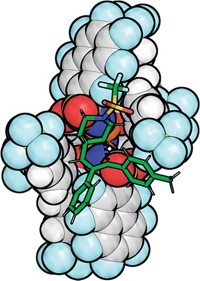Advertisement
Grab your lab coat. Let's get started
Welcome!
Welcome!
Create an account below to get 6 C&EN articles per month, receive newsletters and more - all free.
It seems this is your first time logging in online. Please enter the following information to continue.
As an ACS member you automatically get access to this site. All we need is few more details to create your reading experience.
Not you? Sign in with a different account.
Not you? Sign in with a different account.
ERROR 1
ERROR 1
ERROR 2
ERROR 2
ERROR 2
ERROR 2
ERROR 2
Password and Confirm password must match.
If you have an ACS member number, please enter it here so we can link this account to your membership. (optional)
ERROR 2
ACS values your privacy. By submitting your information, you are gaining access to C&EN and subscribing to our weekly newsletter. We use the information you provide to make your reading experience better, and we will never sell your data to third party members.
Computational Chemistry
Simulations unveil Grignard reactions’ complex mechanism
Detailed models highlight a key role for solvents
by Sam Lemonick
February 19, 2020
| A version of this story appeared in
Volume 98, Issue 8
Organic chemistry students and bench chemists alike rely on the Grignard reaction, a relatively simple way to make carbon-carbon bonds. But even though the reaction was first described 120 years ago, chemists have only now uncovered the details of its complex mechanism (J. Am. Chem. Soc. 2020, DOI: 10.1021/jacs.9b11829)
In a Grignard reaction, a carbon-bonded magnesium halide adds to a carbonyl group to form an alcohol. Textbooks explanations describe the reaction’s mechanism as a nucleophilic addition, or mention a possible radical mechanism. Odile Eisenstein of the University of Oslo and the University of Montpellier has dreamed of fleshing out the reaction in more detail with a computational simulation since she was a PhD student in the 1970s. When she and Oslo colleague Michele Cascella started talking about Cascella’s work—more accurately modeling solvents using molecular dynamics—the two realized they might be able to make Eisenstein’s dream reality.
They were right. They simulated the reactions of CH3MgCl with acetaldehyde and fluorenone in tetrahydrofuran, revealing a complicated mechanistic landscape involving competing nucleophilic and radical pathways that differ in energy by just 1 kcal—too small for their simulations to differentiate. But because they were able to simulate more solvent molecules than previous groups, Eisenstein and Cascella uncovered a critical role for THF. Although magnesium typically only accepts four ligands, they found THF can add as a fifth, changing the metal’s electronic symmetry and helping bonds break and form.
The research shows that whichever pathway the reaction takes, it’s not just the reactant and substrate that matter: “The number and movements of attached solvent molecules play a supporting role in the mechanism,” says Grignard-reaction expert Robert E. Mulvey of the University of Strathclyde.
Eisenstein and Cascella say they want to model every variation of the reaction they can. Different reagents and additives can guide Grignard reactions in desired directions, and the researchers think their approach could show new ways to improve the time-tested reaction.





Join the conversation
Contact the reporter
Submit a Letter to the Editor for publication
Engage with us on Twitter